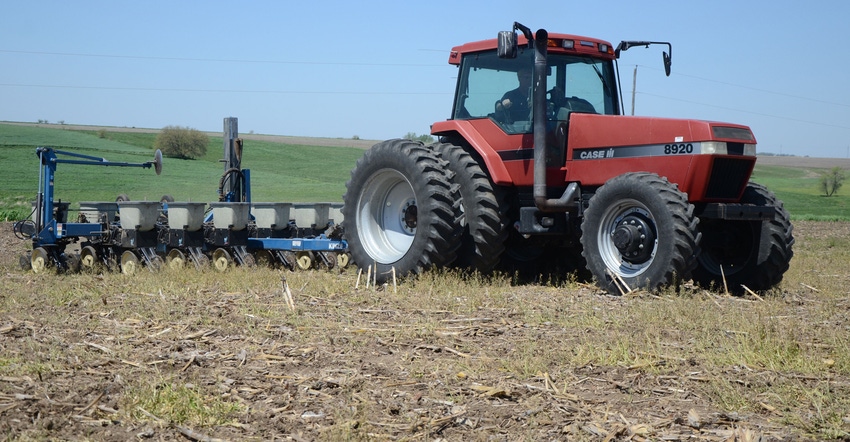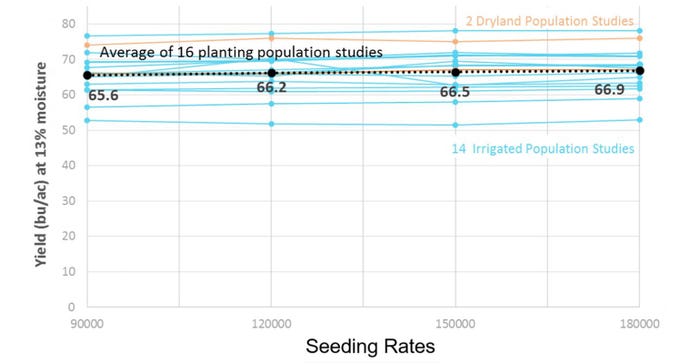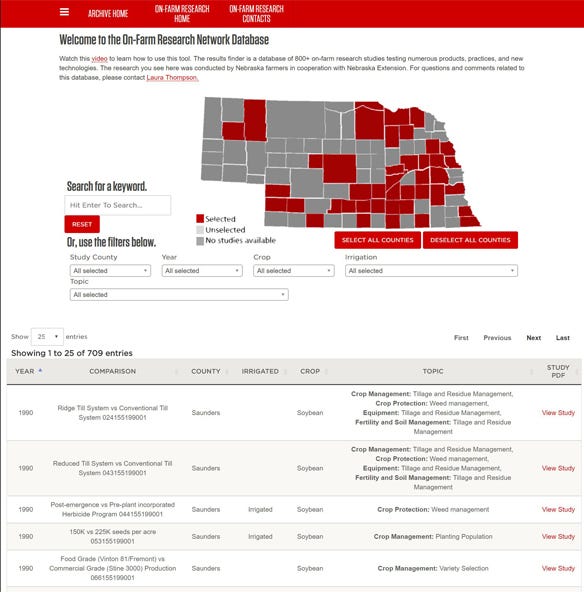December 18, 2017

By Laura Thompson and Keith Glewen
The Nebraska On-Farm Research Network traces its roots back to 1989, when 20 producers in Saunders County came together through Nebraska Extension to form the Nebraska Soybean and Feed Grains Profitability Project. The group, which conducted randomized, replicated research to answer questions surrounding profitability from various farming practices, set the foundation for what officially became the Nebraska On-Farm Research Network in 2012.
Throughout this time, 59% who implemented on-farm research practices realized a 1- to 6-bushel-per-acre yield increase, with an average profit increase of $11 to $15 per acre.
Here are seven reasons to conduct on-farm research:
1. Get information that is relevant to your farm. Nebraska has a highly variable climate. The soil types, weather conditions and management practices on your farm are unique. What works for someone else in Nebraska, may not work for you. Testing new products and management practices on your own farm is the best way to determine if they will be profitable for you.
2. Risk management. You may have heard about a new product or practice and are considering giving it a try. On-farm research provides a great way to try something new out and evaluate it before adopting it across all of your acres. The results will either give you the confidence to adopt on all your acres or save you from a costly mistake.
3. Networking. The Nebraska On-Farm Research Network is a great way to meet and interact with other farmers near you, or across the state. Getting to know other innovative farmers will challenge your thinking and expose you to new ways of doing things.
4. Lower your input costs. With current commodity prices, managing input costs is high on most people's lists.
• Sixteen on-farm research studies evaluating 5-gallon-per-acre applications of 10-34-0 as a starter fertilizer were conducted between 1995 and 2016. These studies found that for soils with phosphorus levels less than 10 parts per million, an increase of 12 bushels per acre was realized due to starter. For soils with phosphorus levels of 10 to 20 ppm, an increase of 3 bushels per acre was realized. And for soils with phosphorus levels of 20 to 30 ppm, only 1-bushel-per-acre yield increase was realized due to starter fertilizer.
• Sixteen on-farm research studies evaluated four soybean planting rates: 90,000, 120,000, 150,000 and 180,000 seeds per acre between 2006 and 2016. These studies found that 120,000 seeds per acre with a final plant population of 80,000 to 120,000 plants per acre is generally sufficient for ensuring maximum economic return. When increasing planting rate from 90,000 to 180,000 seeds per acre, yield was only increased by 1.3 bushels per acre and did not offset the increased seeding cost. Surveys found that most Nebraska farmers are planting an average of 150,000 seeds per acre. Reducing the soybean seeding rate from 150,000 to 120,000 seeds per acre (aiming for 100,000 plants per acre final stand) can result in a $10.69 per acre savings without affecting yield (assumes a $60 per unit seed cost at 140,000 seeds per unit).
• Nebraska farmers have tested many other crop inputs and found that many products they were using did not result in a return on investment. This can be for a variety of reasons, but testing these products has allowed these producers to eliminate some production costs with confidence. You can learn from these farmers' tests. Over 700 on-farm research studies are online in a searchable, filterable database.

Nebraska On-Farm Research Network studies have consistently shown lower seeding rates of about 120,000 seeds per acre with a final plant population of 80,000 to 120,000 plants per acre is generally sufficient for ensuing maximum economic return.

5. Get experience with new technologies. Numerous on-farm research projects feature cutting-edge technologies with resources provided by Nebraska Extension. In the past few years, farmers have participated in research projects allowing them to access resources from UNL including:
• multi-hybrid planter for placing hybrids or treated soybeans in specific zones in the field
• high clearance-applicator equipped with crop canopy sensors for in-season, on-the-go, variable-rate nitrogen management
• drone technology for nitrogen management
• new seed treatments
Other farmers had already purchased and implemented new technologies, such as variable-rate capabilities. We help these farmers set up experiments to assess their variable-rate prescriptions, including lime, manure, fertilizer and seeding rate. These trials help farmers evaluate the success and accuracy of their variable-rate prescriptions so they can make adjustments for the future.
6. Access unbiased research data. Time and time again, farmers and agronomists cite the unbiased research-based information as the most valuable reason to be involved in the Nebraska On-Farm Research Network. You can access and contribute to this unbiased research data. In February, the Nebraska On-Farm Research Network will be hosting its annual results at meetings across the state. If you are at all interested in on-farm research, you won't want to miss these meetings. These meetings start with tips, suggestions and guidelines on how to conduct valid, reliable on-farm research. Then, farmers and agronomists who conducted their own on-farm research in 2017 will share their results and observations. These meetings typically have a great deal of agronomic discussion and are an excellent opportunity for networking. Due to all the unique interests, a wide variety of research topics are covered. Five information-packed meetings are planned:
• Feb. 19 at the Eastern Nebraska Research and Extension Center near Mead, 9 a.m. to 4:30 p.m.
• Feb. 20 at the Lifelong Learning Center at Northeast Community College, Norfolk, 9 a.m. to 4:30 p.m.
• Feb. 21 at the Hall County Extension Office, College Park Campus, Grand Island, 9 a.m. to 4:30 p.m.
• Henry J. Stumpf International Wheat Center, Grant, noon to 5 p.m.
• Knight Museum & Sandhills Center, Alliance, 9 a.m. to noon (MST)
Lunch is included at all locations and it’s free to attend. Preregister at least two days in advance for meal planning purposes by contacting [email protected] or 402-624-8030.

RESEARCH DATABASE: Over 700 on-farm research studies are available online in a searchable, filterable database. Farmers and agronomists often cite the unbiased research based information as the most valuable reason to be involved in the Nebraska On-Farm Research Network.
7. Improve profit. The bottom line? Participating in the Nebraska On-Farm Research Network helps farmers improve their profitability. Past on-farm research participants who implemented their research findings had an average profit increase of $31.25 per acre.
You may already be conducting some experiments on your farm. Yield monitors and variable-rate technologies make experimenting on your own farm convenient. You can take your experiments to the next level by working with Nebraska Extension Educators in the Nebraska On-Farm Research Network.
Extension educators can help you set up an experiment that accounts for variability within your field, allowing you to have greater confidence in your research results.
Thompson is Nebraska On-Farm Research Network and ag technology Extension educator. Glewen is a Nebraska Extension educator.
You May Also Like




